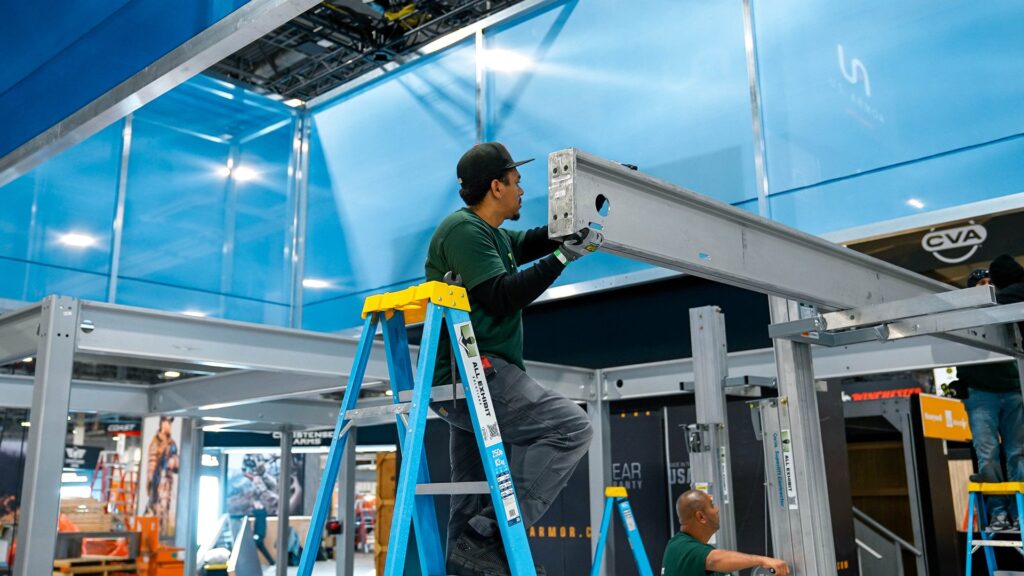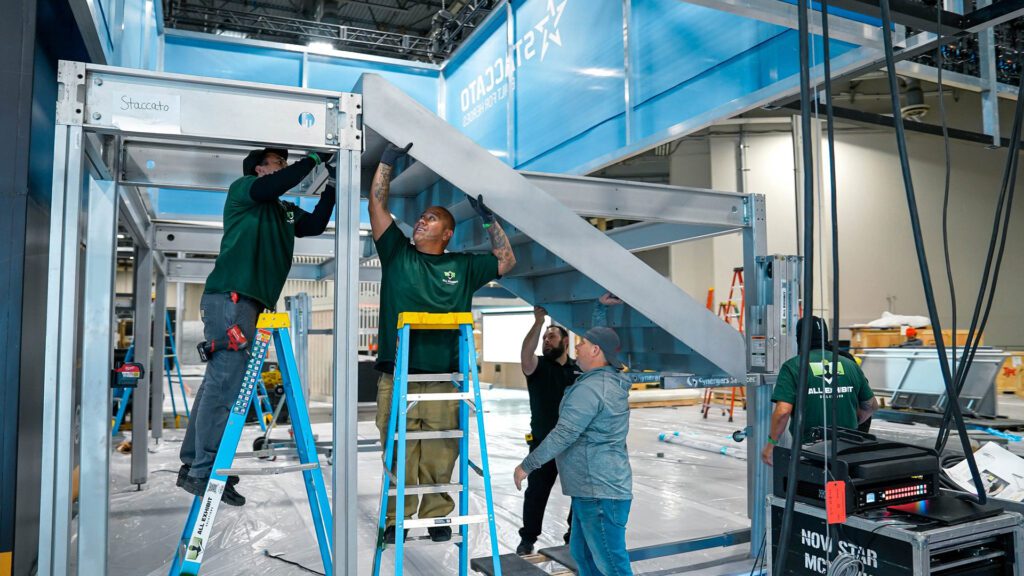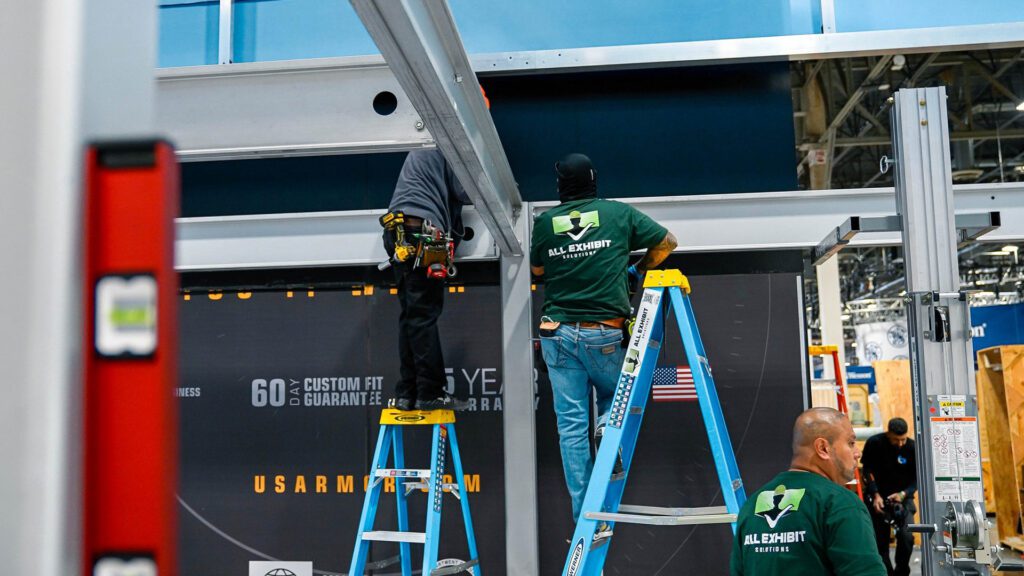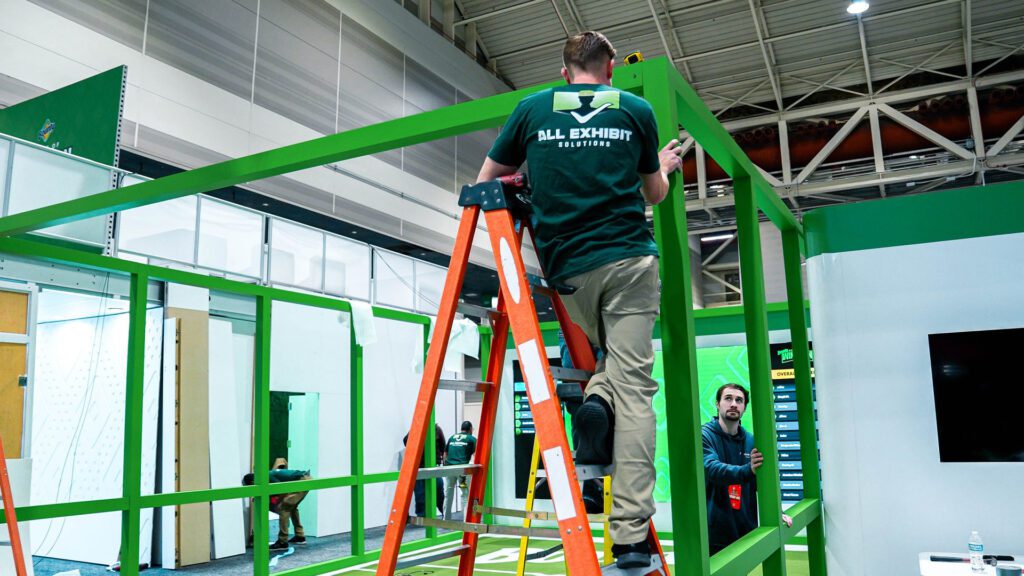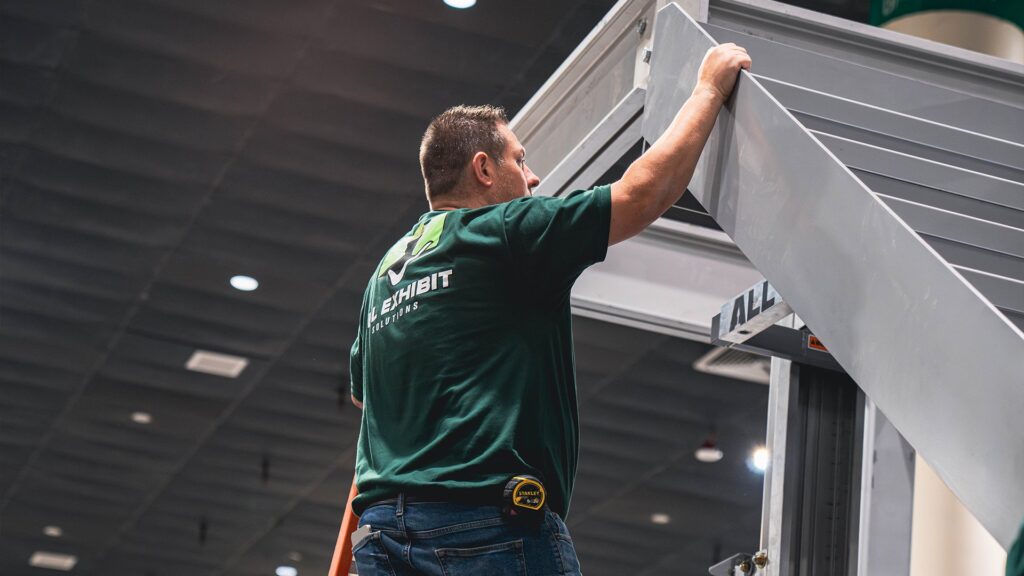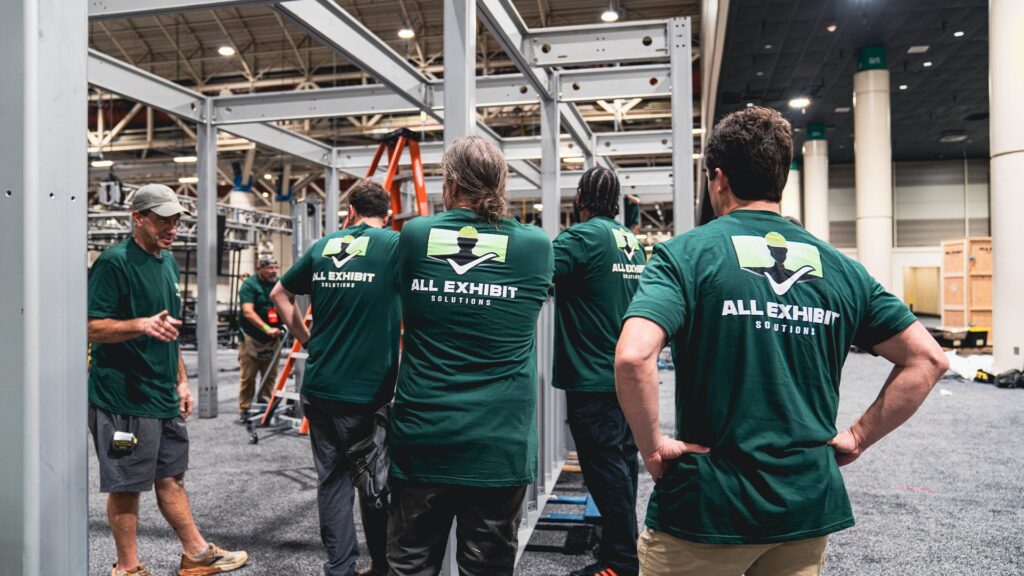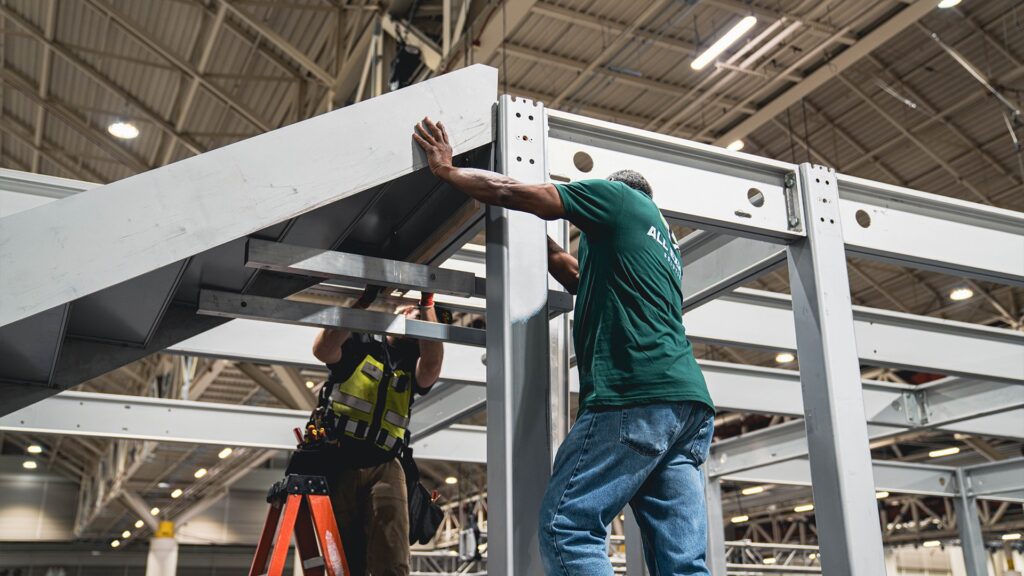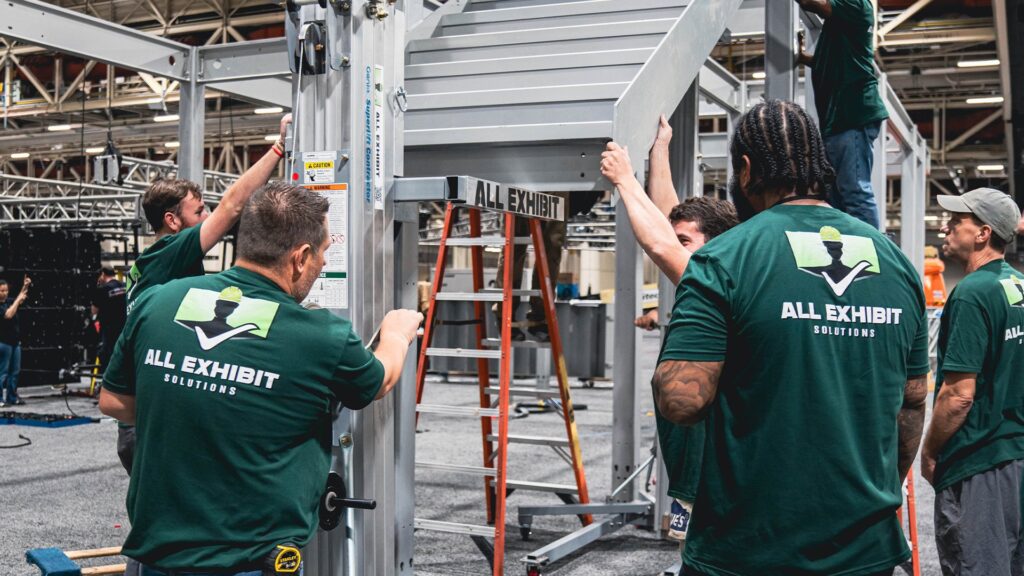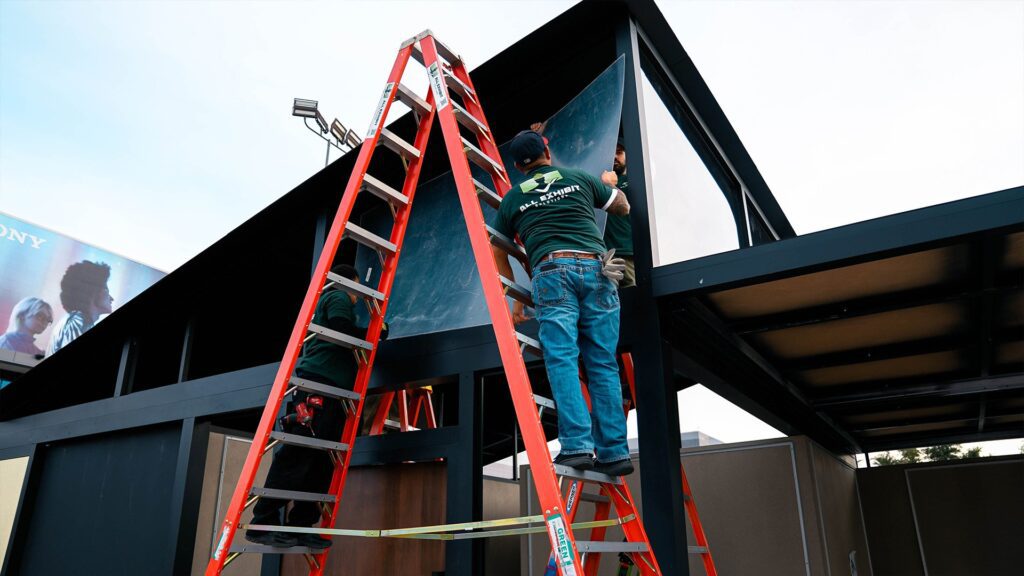Introduction
Trade shows are a powerful platform for businesses to showcase their products, connect with potential clients, and build industry networks. However, the key to making a lasting impression lies in meticulous planning and execution. A trade show checklist ensures that every detail is covered, from initial planning to post-event follow-up, maximizing your chances of success. All Exhibit Solutions specializes in providing seamless trade show installation and dismantle services, ensuring your event runs smoothly from start to finish.
Understanding the Components of a Trade Show Budget
A comprehensive trade show budget consists of several components that must be carefully planned and managed. Here’s a breakdown of the key elements:
Pre-Show Expenses
- Registration and Booth Fees: These are typically the largest initial costs. Early registration can often lead to discounts, so plan ahead to secure the best rates.
- Design and Fabrication of the Booth: The cost of creating an eye-catching booth that attracts visitors is significant. This includes design fees, materials, and any special features like lighting or interactive displays.
- Marketing and Promotional Materials: Invest in marketing materials such as brochures, business cards, and promotional giveaways. These items help draw attention to your booth and leave a lasting impression on visitors.
On-Site Costs
- Installation and Dismantling Services: Hiring professionals for the setup and teardown of your booth ensures efficiency and safety, but these services can add up. All Exhibit Solutions offers competitive pricing for these essential services.
- Staff Travel and Accommodation: Include expenses for travel, lodging, and meals for your team. Look for group rates or partnerships with nearby hotels to minimize costs.
- Utilities and Services: Don’t forget to budget for electricity, internet, and other essential services that keep your booth operational.
Post-Show Expenses
- Shipping and Logistics: Factor in the cost of transporting your booth and materials back to your office or the next event.
- Follow-Up Marketing and Lead Nurturing: Allocate funds for post-show activities like email campaigns and direct follow-ups to nurture leads generated at the event.
- Evaluation and Analysis of ROI: Assessing the success of the trade show and calculating ROI is crucial. Budget for tools or services that can help measure your performance.
Setting a Realistic Budget
Creating a realistic budget requires a clear understanding of your financial capacity and strategic priorities.
Assessing Financial Capacity
Start by determining the resources you have available for the trade show. Consider your company’s overall financial health and prioritize expenses that align with your business objectives. A well-thought-out budget ensures you allocate funds to areas that will provide the most impact.
Researching Industry Benchmarks
Understanding what competitors and industry peers spend can provide valuable insights. Analyze average costs in your industry to set competitive yet achievable goals. This benchmarking helps in identifying areas where you can cut costs without compromising quality.
Tips for Efficient Trade Show Budgeting
Implementing cost-saving strategies and leveraging technology can significantly enhance your budgeting process.
Negotiating Contracts and Costs
Negotiating with vendors and service providers can yield significant savings. Explore opportunities for discounts or added value by building strong relationships and demonstrating loyalty to partners. Early booking and bulk purchasing can also lead to favorable terms.
Leveraging Technology
Utilize budgeting software and tools to track expenses accurately and in real time. These tools can provide insights into spending patterns and help make data-driven decisions. Incorporating analytics allows you to adjust strategies and allocate resources more effectively.
Maximizing ROI on a Trade Show Budget
Achieving a high ROI involves more than just cost management; it requires a focus on results.
Measuring Success
Establish clear objectives and key performance indicators (KPIs) before the event. These may include the number of leads generated, sales closed, or brand impressions made. Analyze outcomes against these metrics to evaluate success and identify areas for improvement.
Continuous Improvement
Post-event analysis is critical for learning and growth. Review what worked well and what didn’t, and use these insights to refine your approach for future events. A cycle of continuous improvement ensures that each trade show participation is more effective than the last.
A strategic trade show budget is a powerful tool that enables businesses to participate in trade shows confidently and effectively. By understanding the components of your budget, setting realistic goals, and focusing on ROI, you can ensure that your investment pays off in both the short and long term. At All Exhibit Solutions, we specialize in helping businesses optimize their trade show experiences. Contact us today to learn how we can support you in creating a budget that works.


